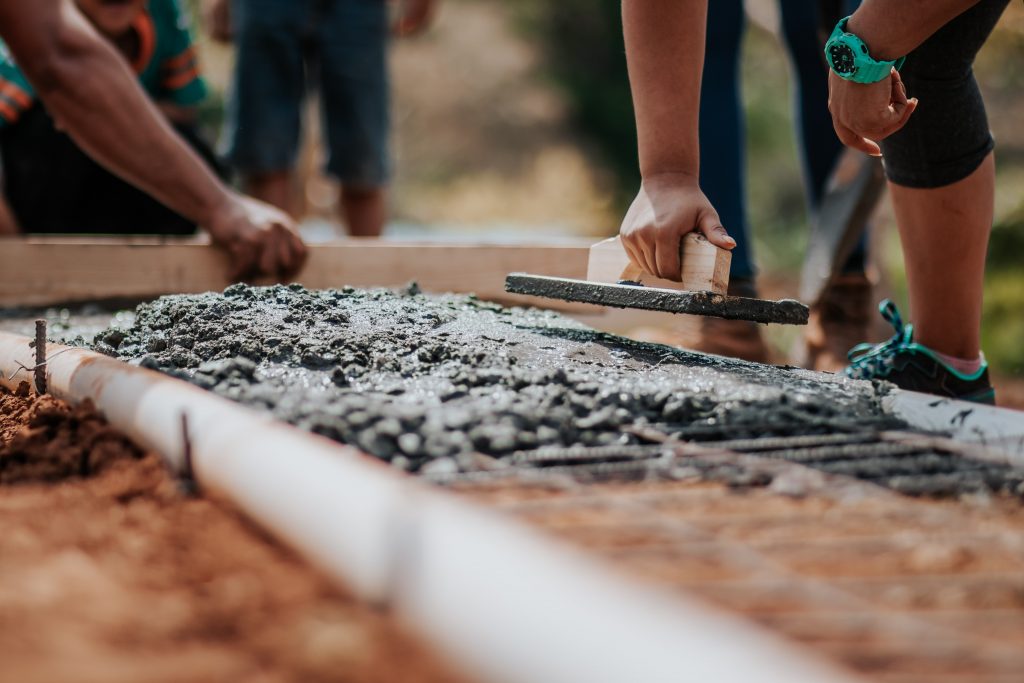The term ?sustainable? is often a catchall phrase used to describe a positive and environmentally friendly structure. Sustainable practices are used widely but the most common materials people use to make them happen are wood, concrete, steel, and aluminum.
Each material has its advantages and disadvantages. The following materials are often considered the best options for building projects from an environmental standpoint.
1. Reclaimed or Recycled Steel
Steel is 100 percent recyclable, lowering the environmental effect of the new building. Aluminum and steel items need a lot of energy to mine, heat, and shape, but properly and economically reusing or recycling them into new products minimizes the amount of energy consumed and makes the material more sustainable; recycled metal is long-lasting and does not require regular replacement.

Steel is the most widely recycled material. And has been existing since the 1970s, while aluminum is the most recycled material in the US. When recycled, both metals are 90% reusable, compared to just 10%-20% for new materials. Recycling steel uses 80% less energy than mining and reduces carbon emissions by 88%. Aluminum recycling also saves energy and reduces carbon emissions by 90%.
Steel buildings, especially those that are prefabricated, have a lot of applications. Steel buildings have been used in houses and commercial businesses to create factories, warehouses, factories, abattoirs, shopping malls, offices, and even schools.
2. Precast Concrete Slabs
Precast concrete slabs are also the perfect option for commercial building owners and designers. The reduced installation time makes concrete slabs a much more affordable alternative to installing traditional concrete. Additionally, precast allows for better quality control, from start to finish, resulting in a higher quality product.
Precast concrete slabs are made on the factory floor and then put on construction sites. Some, like concrete blocks, are formed of concrete but have huge hollow air holes. They can withstand all types of weather; precast concrete slabs are utilized for walls and building facades, while others can be used for floors and flat roofs.
3. Bamboo
Bamboo is a prominent contender when it comes to environmentally friendly building materials. Bamboo has been used to construct buildings in Asia for thousands of years. Bamboo is becoming increasingly popular as a viable alternative to wood in construction.
Bamboo is among the world?s fastest-growing plants, with a fascinating history. It was first utilized by the Chinese approximately 5,000 years ago. Bamboo was used to make tools during the period. In Asia, bamboo was utilized for everything from scaffolding to furniture and bridges.
4. Cork
Cork is of great interest to the world of fashion. It has unique qualities, which make it a viable alternative to leather. The production process doesn?t involve any chemical compounds. It?s sustainable and renewable.
Cork is nearly impervious to water and does not decay. It also absorbs sound well, making it ideal for insulation sheets, and its high shock absorption properties make it ideal for sub-flooring. It?s also a strong thermal insulator because it?s fire-resistant (especially if left untreated) and doesn?t emit hazardous fumes when burned.
The cork oak is a species of oak (Quercus Suber) indigenous to the Mediterranean region. It covers approximately 10% of the world?s forests and has been harvested extensively for its properties. Cork is more than just a tree, it is an environmentally friendly material that can be used in numerous ways, such as insulation, flooring, and soundproofing.
5. Reclaimed Wood
Wood is a premium choice for eco-friendly construction projects because it requires less energy to process than other materials. It?s also a popular option for housebuilders who want to save energy bills.
When comparing wood with concrete, wood wins hands down regarding energy efficiency. Wood-frame construction uses less energy than any other type of home construction. The process of producing concrete and steel requires a lot of energy. In addition, concrete homes usually have higher energy bills because they?re less insulated.
Conclusion:
It is the responsibility of architects to consider the impact that the design might have on the environment; they must also ensure that their designs can accommodate future needs.
A structure needs to be strong so that it can stand the test of time and contribute positively to the environment.

As the editor of the blog, She curate insightful content that sparks curiosity and fosters learning. With a passion for storytelling and a keen eye for detail, she strive to bring diverse perspectives and engaging narratives to readers, ensuring every piece informs, inspires, and enriches.









